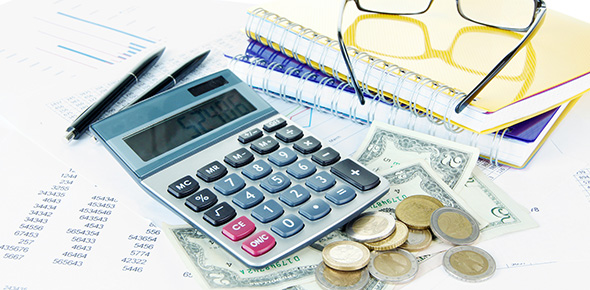Related Flashcards
Related Topics
Cards In This Set
| Front | Back |
|
1 High/low analysis What is high/low analysis?
|
1 High/low analysis A method of analysing a semi-variable cost into its fixed and variable elements
based on an analysis of historical information about costs at different activity
levels.
|
|
1 High/low analysis Advantages of high/ low analysis
|
1 High/low analysis - The high-low method has the enormous advantage of simplicity. - It is easy to understand and easy to use.
|
|
1 High/low analysis Disadvantages of high/ low analysis
|
1 High/low analysis - It assumes that activity is the only factor affecting costs. - It assumes that historical costs reliably predict future costs. - It uses only two values, the highest and the lowest, so the results may be
distorted due to random variations in these values.
|
|
2 Regression analysis What is regression analysis?
|
2 Regression analysis Regression is another method
of forecasting. It involves using historical data to find the line of best fit
between two variables (one dependent on the other), and uses this straight line
to predict future values.
|
|
2 Regression analysis What is the equation for a straight line, what is each symbol?
|
2 Regression analysis y = a + bx y = dependant variablex = independant variablea = fixed costb = var cost per unit
|
|
2 Regression analysis What is the correlation coefficient?
|
2 Regression analysis The strength of the linear relationship between the two variables (and hence the
usefulness of the regression line equation) can be assessed by calculating the
correlation coefficient (“r”)
|
|
2 Regression analysis 1) r is close to +1 2) r is close to –1 3) r is close to 0
|
2 Regression analysis 1) there is a strong positive correlation between the two variables 2) there is a strong negative correlation between the two variables 3) there is little relationship between the two variables
|
|
2 Regression analysis What is the coefficient of determination?
|
2 Regression analysis It shows the percentage
change in the dependent variable, e.g. sales, that can be explained by a change
in the independent variable, e.g. advertising spend r2
|
|
3 Time series analysis What is a time series?
|
3 Time series analysis A time series is a series of
figures relating to the changing value of a variable over time. The data often
conforms to a certain pattern over time. This pattern can be extrapolated into
the future and hence forecasts are possible. Time periods may be any measure of
time including days, weeks, months and quarters.
|
|
3 Time series analysis What are the four components of a time series?
|
3 Time series analysis - The trend – this describes the long-term general movement of the data - Seasonal variations – a regular variation around the trend over a fixed time
period. - Cyclical variations – economic cycle of booms and slumps. - Residual variations – irregular, random fluctuations in the data usually caused
by factors specific to the time series. They are unpredictable.
|
|
3 Time series analysis The additive model
|
3 Time series analysis Actual = Trend + Seasonal Variation (SV) The SV will be expressed in
absolute terms.
|
|
3 Time series analysis The multiplicative model
|
3 Time series analysis Actual = Trend × SV factor The SV will be expressed as a percentage, a decimal or an index
|
|
4 Average growth models Why would yo have an average growth model? What is the equation?
|
4 Average growth models Strategic plans may incorporate an objective of a target average growth of
profit or sales over a number of years. There may also be requirements for a
target average growth rate of productivity over a number of years.
 g = average growth rate, as a
decimal
n = number of periods of
growth
g = average growth rate, as a
decimal
n = number of periods of
growth |
|
5 The use of judgement and experience in forecasting Why are judgement and experience are important in forecasting?
|
5 The use of judgement and experience in forecasting The quantitative models available are mainly based on past information and
extrapolate these results into the future. Managers will have access to many
sources of information to help them judge whether past results are likely to be
good predictors of future results. ie a competitor has recently launched a new product in the market or a new advertising medium is to be used
|
|
6 Learning curves What is Wrights Law?
|
6 Learning curves As cumulative output doubles, the cumulative average time per unit falls to a
fixed percentage (referred to as the learning rate) of the previous average
time.
|





